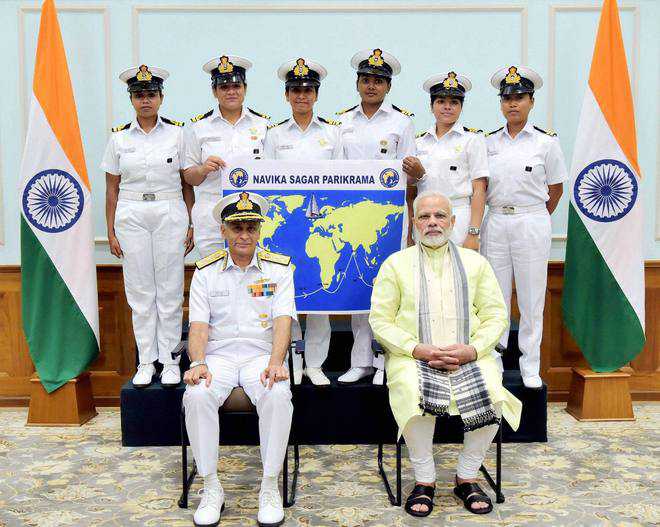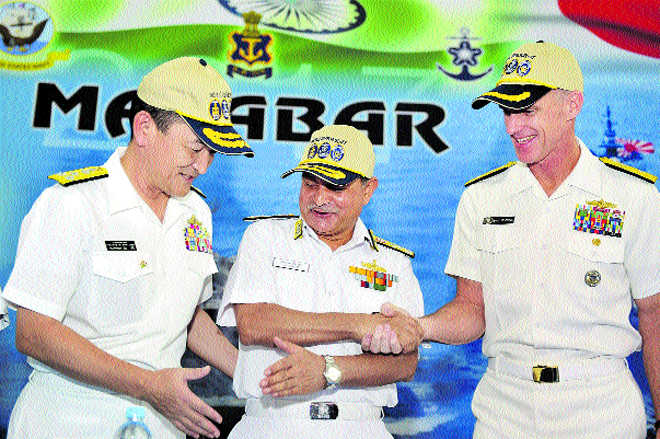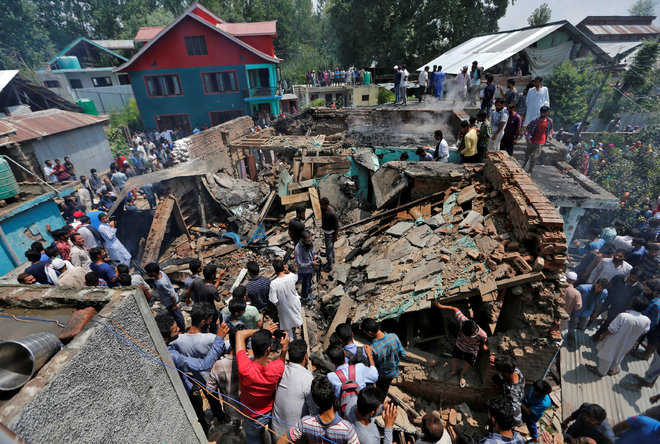
PM Narendra Modi with the six women officers who are due to circumnavigate the globe and Admiral Sunil Lanba. PTI
New Delhi, August 17
A six-woman Navy crew led by an Uttarakhand officer, Lt Commander Vartika Joshi, will kick off their voyage to circumnavigate the globe in the first week of September from Goa.The officers have been trained to handle everything from equipment breakdown, extreme temperatures to emergencies such as a crew member falling overboard.Lt Commander Joshi said: “We will be facing some of the roughest seas. We’ve learnt everything from scratch and have trained to handle whatever may come our way.”(Follow The Tribune on Facebook; and Twitter @thetribunechd)The crew comprises Lt Commanders Pratibha Jamwal, P Swathi, and Lieutenants S Vijaya Devi, B Aishwarya and Payal Gupta.Jamwal hails from Kullu in Himachal Pradesh, while Gupta belongs to Dehradun.The officers will set out on the voyage, “Navika Sagar Parikrama”, from Goa aboard “INSV Tarini”, a 55-foot sailing vessel, and head to Australia.The 21,600-nautical mile expedition will be covered in five legs, with stopovers at four ports. A voyage qualifies as circumnavigation if it starts and finishes at the same port, does not entail crossing a canal or strait, all meridians are crossed at least once and the distance covered is more than 21,600 nautical miles. — TNS
All-women naval crew to embark on around the globe voyage

Six women officers of the Indian Navy, who are due to circumnavigate the globe, at a press conference in New Delhi on Thursday. PTI
New Delhi, August 17 A six-member all-women crew of the Indian Navy is set to embark on an eight-month voyage in September to circumnavigate the world, the first such feat to be attempted from Asia.The naval officers led by Lt. Commander Vartika Joshi will set sail in the naval auxiliary vessel INSV Tarini from Goa, and they are expected to depart early September.“We will be passing through some of the roughest patches of sea during the voyage,” Joshi told reporters today.“This all-women circumnavigation attempt would be the first of its kind, not only from India but also Asia. They are well-trained and with their maritime odyssey, they will also set sail into the record books,” Naval Chief of Personnel Vice Admiral AK Chawla said.“They are going to set benchmarks not just for India but the entire world,” he said.Fellow crew member Pratibha Jamwal, who had joined the Naval Academy in 2011, said, the voyage is daunting but they are all trained and set for it.The expedition will be covered in five legs, with stopovers at 4 ports—Fremantle (Australia), Lyttleton (New Zealand), Port Stanley (Falklands), and Cape Town (South Africa), it said.INSV Tarini is a 55-foot sailing vessel, which has been built indigenously, and inducted in the Indian Navy earlier this year.The crew had met Prime Minister Narendra Modi yesterday. — PTI



































































